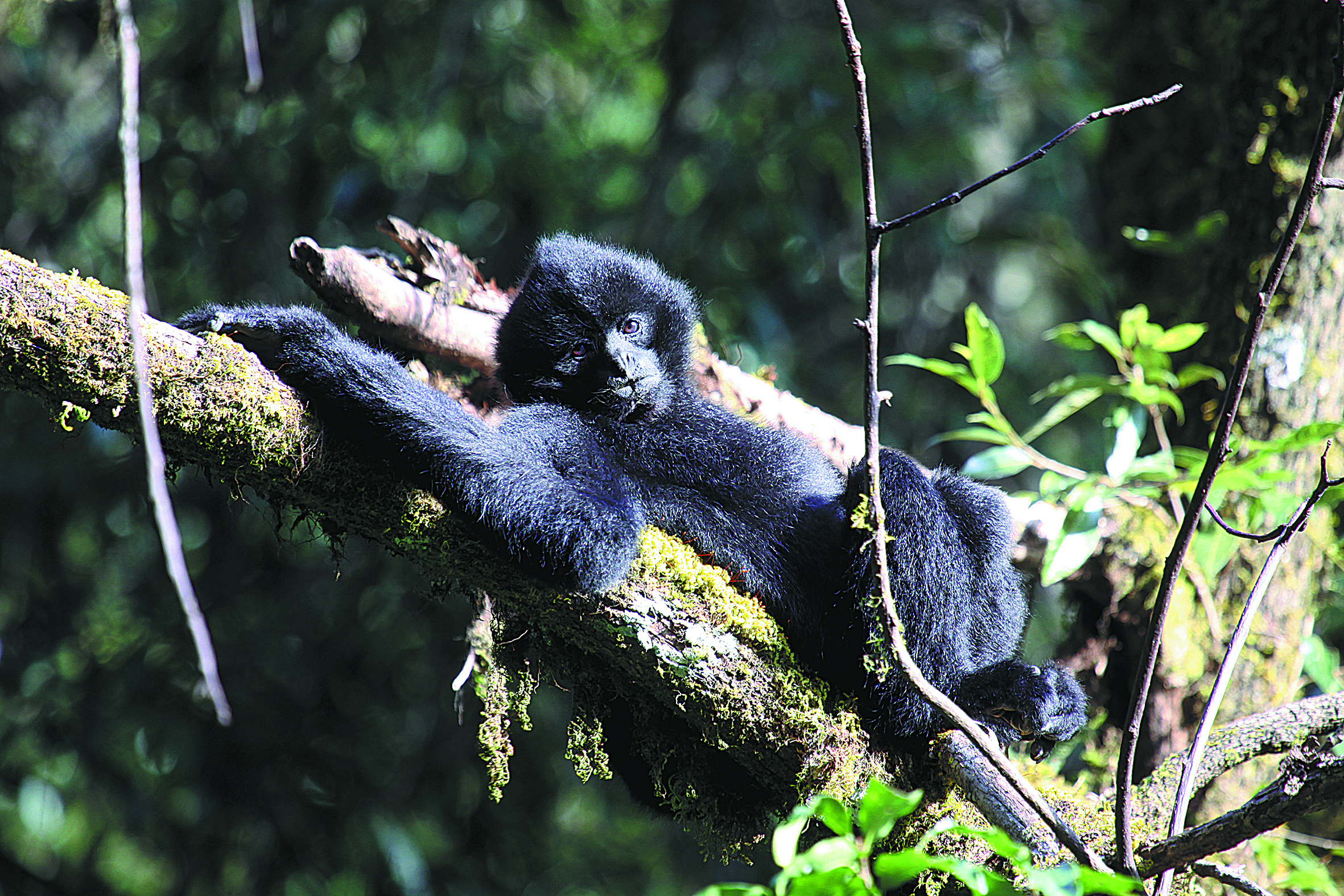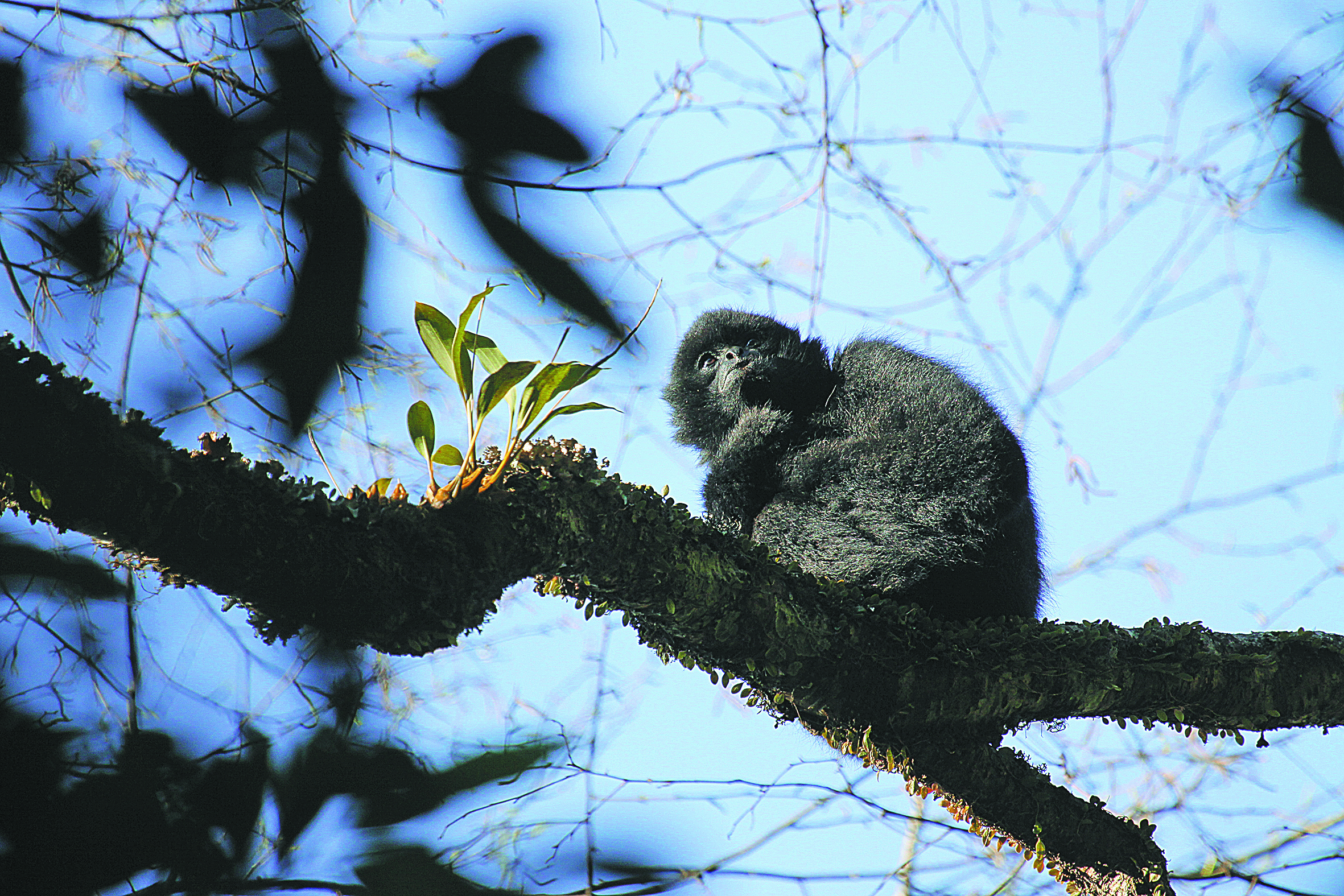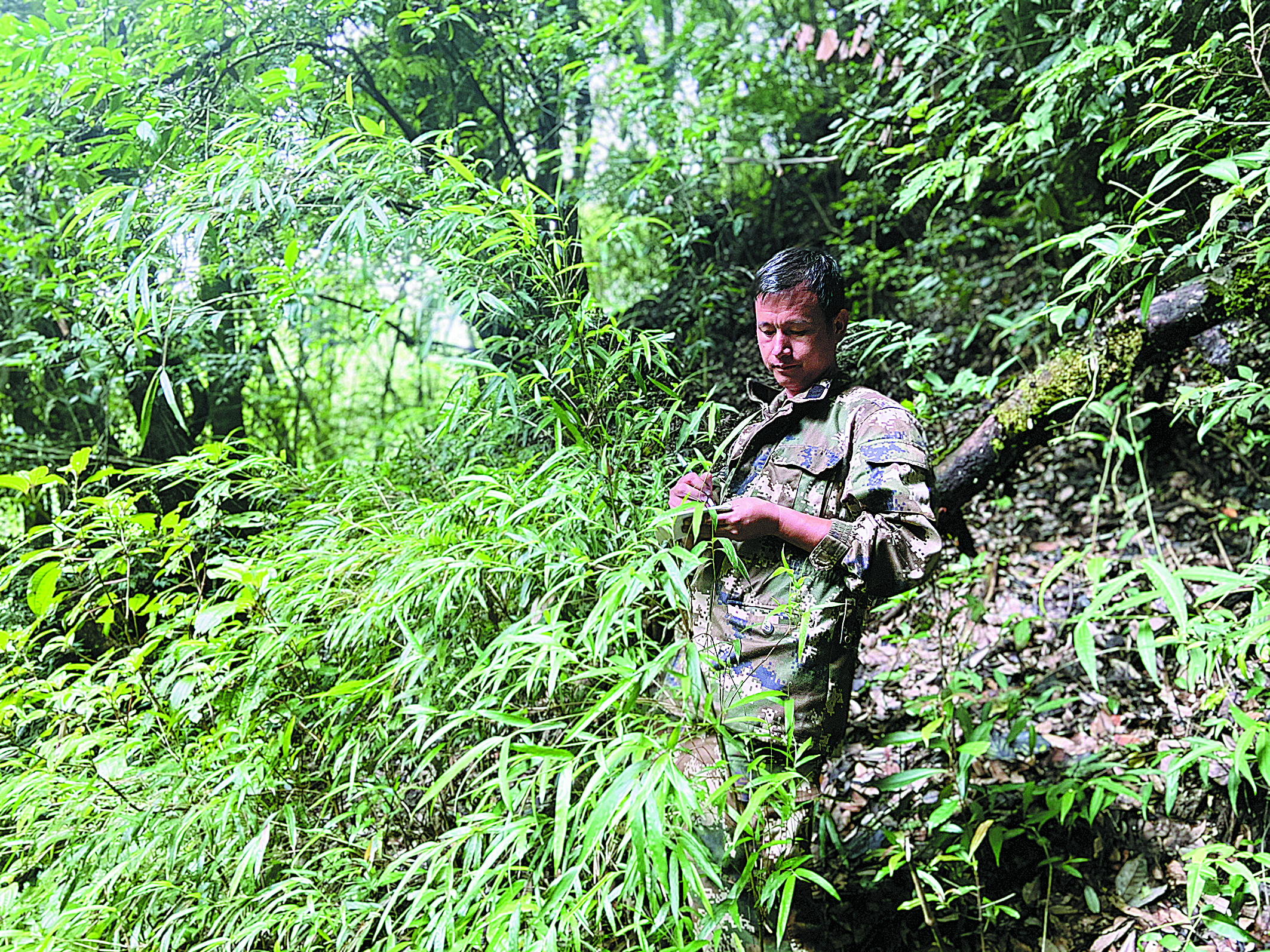
A female western black crested gibbon is photographed in the mountainous areas of Xinping county, Yunnan province. CHINA DAILY Li Guolin, a forest ranger in the Ailao Mountains in the southwestern province of Yunnan, takes care of many different plant species. However, the 40-year-old also looks after an endangered animal-the western black crested gibbon, a small primate named for the black fur on the crown of its head. In recent decades, the loss of its habitat to the expansion of agriculture, illegal use of forest land and unlawful logging have led to a sharp decline in the ape's numbers. The International Union for Conservation of Nature classifies the species as the second-most endangered primate in the world, with a total population of between 1,100 and 1,300. Yunnan is the species' sole habitat in China, and Xinping county is home to 124 groups, the largest number in the province, comprising 500 to 600 members in total. Li's base, the management office of the Ailao Mountain Nature Reserve in Xinping, has been making conservation efforts since the late 1980s. Those efforts have helped to promote a rise in the animal's population in recent years. Also, under the guidance of scientists, the forest rangers have successfully accustomed the gibbons to their presence through several years of day-to-day observations, rather than simply providing them with food to encourage familiarity. 
Western black crested gibbons rest on tree branches after searching for food in Xinping. CHINA DAILY It is the first time the western black crested gibbon has been studied in this way anywhere in the world. In 2010, Li was assigned to work at Chamagudao station, which is overseen by the Xinping office, spending more than two years following the region's gibbons every day and becoming their "friend". In 2009, he inherited the job from his father, who worked at Zhelong station on a summit in the Ailao range. At the age of 29 in 2010, Li was selected as one of three young rangers responsible for patrol work at the Chamagudao station. "We were the youngest in the reserve and could race the gibbons physically," Li said with a laugh. He recalled that during the first two years, he woke at 4:30 am every day to have breakfast-the only prepared meal he ate every day. Now, he starts his day at 6 am by identifying the location of a group of gibbons and preparing to record their daily activities. He begins with their morning calls, which are important indicators that help locate the gibbons and assess the numbers of one or more groups. Western black crested gibbons rest on tree branches after searching for food in Xinping. CHINA DAILY
Accurate method "It's a unique and highly accurate method of studying gibbons," said Jiang Xuelong, a professor with the Kunming Institute of Zoology at the Chinese Academy of Sciences. Having studied mammal ecology and evolution for many years, Jiang said gibbons move very quickly in the forest, swinging from tree to tree. "They spend their lives in the upper branches of the trees and seldom stay on the ground. That makes observation a challenge," he said. Physical fitness is crucial for the job, and the process of recording the animals' movements scientifically is also demanding. According to Li, the gibbons' movements must be recorded every three minutes. The recording schedule usually only ends at about 7:30 pm, when the animals make their final choice of a tree in which they will spend the night in safety. "During the day, they only have a nap at noon. So, we have to walk for about 13 hours a day in the mountains. It's a tough job, even for a young man. On rainy days, the work of observing and recording is even harder than usual," he said. Having persisted in his efforts for two years, Li successfully drew near the three gibbon groups at Chamagudao station. In 2013, he saw them for 19 consecutive days during each of his monthly 22-day patrols. Now, the distance between him and the gibbons has shrunk from about 30 meters to 2 meters thanks to the day-to-day companionship. "One day, I was patrolling in the forest and a gibbon suddenly jumped to the ground and picked up some fruit that had fallen from a tree. It was just 2 meters in front of me, but it didn't run away. It just glanced at me and continued to eat the fruit. We stayed like that for about 10 minutes-I think it regarded me as another wild species," he said. In 2013, Li witnessed a gibbon couple produce a youngster. "I named the father Xin and the mother Ping, and then gave the baby the name Xinping, the same pronunciation as the county's name," he said. In recent years, Li has recorded important activities, including how the mother trained her offspring, who was very timid before the age of 2 and clung to her fur all day. "Ping held the baby's legs, hung it upside down and swung it gently. We think this helped Xinping become used to the feeling of swinging from tree to tree in the forest," Li said. Moreover, he also noticed that family members share emotional fluctuations, just like humans. "Early in the day, we always hear the loud, unique morning calls between females and males. But one day, I noticed that Ping wouldn't echo Xin's calls because he had taken some fruit from her the day before. I was astonished that she was in a sulk with her husband, which is also common between human couples," Li said. 
Forest ranger Li Guolin records the activities of western black crested gibbons in the Ailao Mountains in Yunnan. YANG WANLI/CHINA DAILY Gender confusion Xinping is now more than 7 years old, close to sexual maturity. But it's still hard to determine its gender, which can usually be easily recognized by the color of the fur. However, the coats of western black crested gibbons change color during their lives, according to Jiang. "Their fur is usually dark brown or black after birth and it turns yellow at the age of 2. A final change will come when they are 8 years old. The fur of females remains yellow and the males' fur turns black," he said. More confusingly, irrespective of gender, juvenile western black crested gibbons have a "fake" penis, which gradually disappears if the carrier is female. Jiang said studies are ongoing, as there are many special characteristics that need to be determined. "Before we get an answer, our prime task is to protect the apes from extinction, so our younger generation will have a chance to see the species and continue this research," he said. Source: China Daily
|









7740f3b5-9ecb-438e-9052-76cb2d4bb671.jpg)

